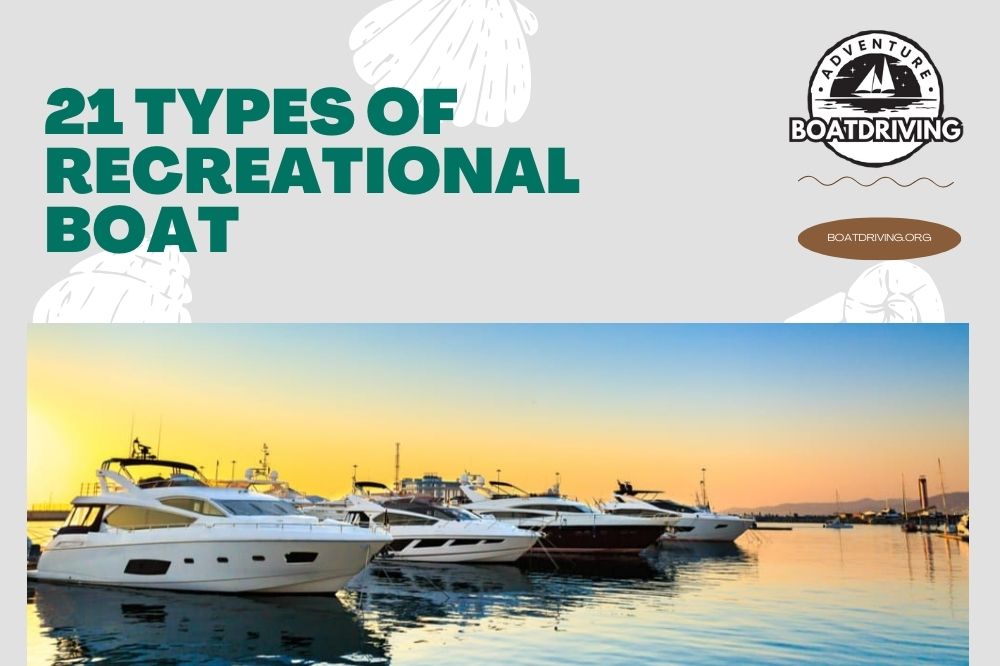A boat is a generic term for any craft that travels on water. Some are used for commercial work, like fishing or paid transport, where the aim is to get from one shore to the other. Others aren’t trying to get anywhere – you ride them for the pleasure of being on the water. It’s about the process, not the destination. Let’s look into these recreational boat types.
Types of Boats in General
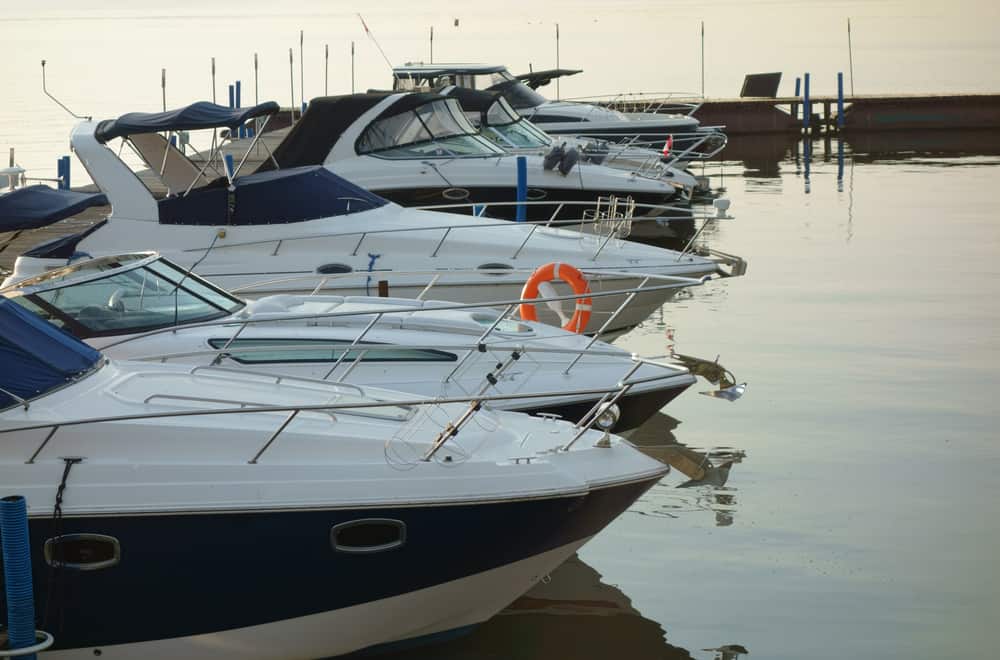
A boat can be anything from a luxury yacht to a kid’s DIY log raft. So naturally, there are different ways to categorize them. We’ll start by defining a few recreational boat classes:
- In Europe, the EU classes boats into four groups that range in size from 8 feet to 79 feet (2.5 meters to 24 meters). The classes cover speed in knots. They also suggest the maximum wave height these boats can withstand. These European CE classes are:
-
- Category A: Ocean Boats – Over 40 knots and waves over 13 feet.
- Category B: Offshore Boats – Up to 40 knots and waves up to 13 feet.
- Category C: Inshore Boats – Up to 27 knots and waves up to 7 feet (these mostly sail in large bays and lakes).
- Category D: Inland or Sheltered Coasts – Up to 16 knots and waves up to 18 inches (these mostly sail in small lakes and rivers).
- Here in the States, boats are classed by their length in feet. And in true American style, we measure our recreational boats from stern to bow. Then we mingle the letters and numbers to come up with the counterintuitive combination below:
-
- Class A: 16 feet or less.
- Class 1: 16 feet to 26 feet.
- Class 2: 26 feet to 40 feet.
- Class 3: 40 feet to 65 feet.
- The third kind of categorization is based on functionality. Your choice of boat depends on your top sailing activities, and these can be classified as follows:
-
- Houseboats and yachts if you want a place to sleep.
- Cruisers if your focus is on speed and competitive leisure.
- Watersport boats with a towing mast and a harness.
- Fishing boats for amateur anglers.
- Hybrids like day boats with multiple functionalities.
Outside of the categorizations, boats are sometimes divided into ten types and sometimes into twenty. Today, we’re going to look at the most popular recreational boat types. We’ll teach you how to tell them apart, and suggest the best ways to find a boat to suit your needs.
Types of Recreational Boats
In ordinary language, a boat is just a small ship. Others describe it as a vessel that’s small enough to fit inside a ship – though a vessel can be 1,000 feet and still be classified as a boat. Of course, there are more differences between boats and ships, like crew and cargo.
And sometimes the line between pleasure and commerce is blurred – we’re thinking of cruises here, which are commercial to their owners but are pleasure crafts from a passenger perspective. Either way, let’s look through the most common recreational boat types around.
1. Aluminum / Jon Boats
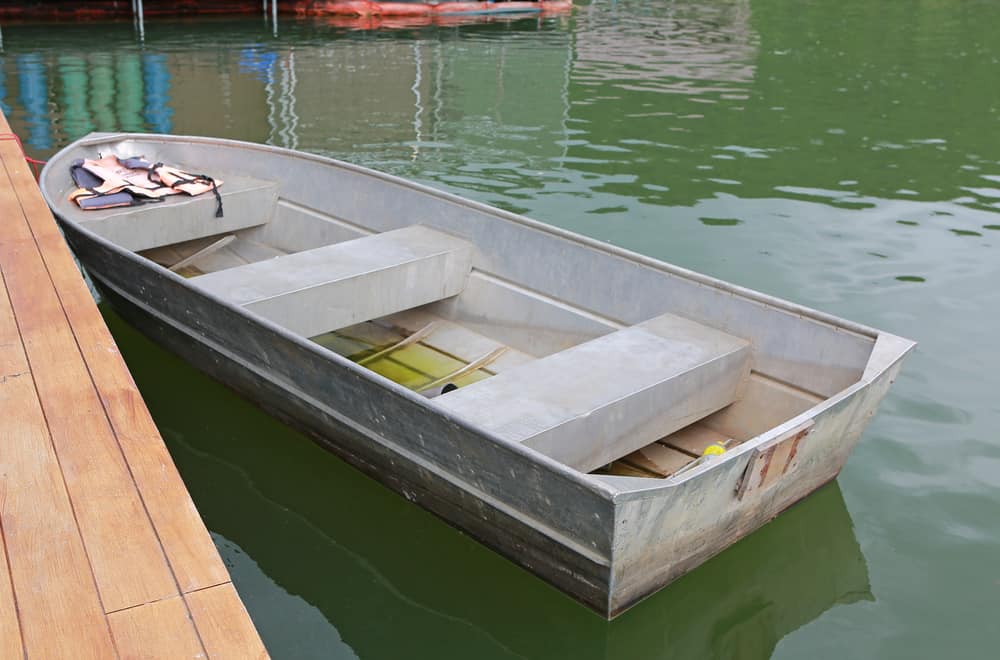
Technically, you might think of fishing boats as commercial boats. But maybe it’s a personal vessel that you park on your deck. And you probably fish for fun, or sometimes you just sail without your water-hunting gear. In that case, what you have is a recreational fishing boat. But fishing boats can also be classified as artisanal, for small-scale regional seafood suppliers.
And industrial ones are large-scale commerce boats. But we’re focusing on pleasure boats, starting with the most basic – aluminum boats. They have high sides, flat backs, and are great for families. They’re sometimes called car toppers because they’re light enough to fit on your roof rack. They can have small engines or oars and are good for shallow water fishing.
2. Bass, Bay, and Flat Boats
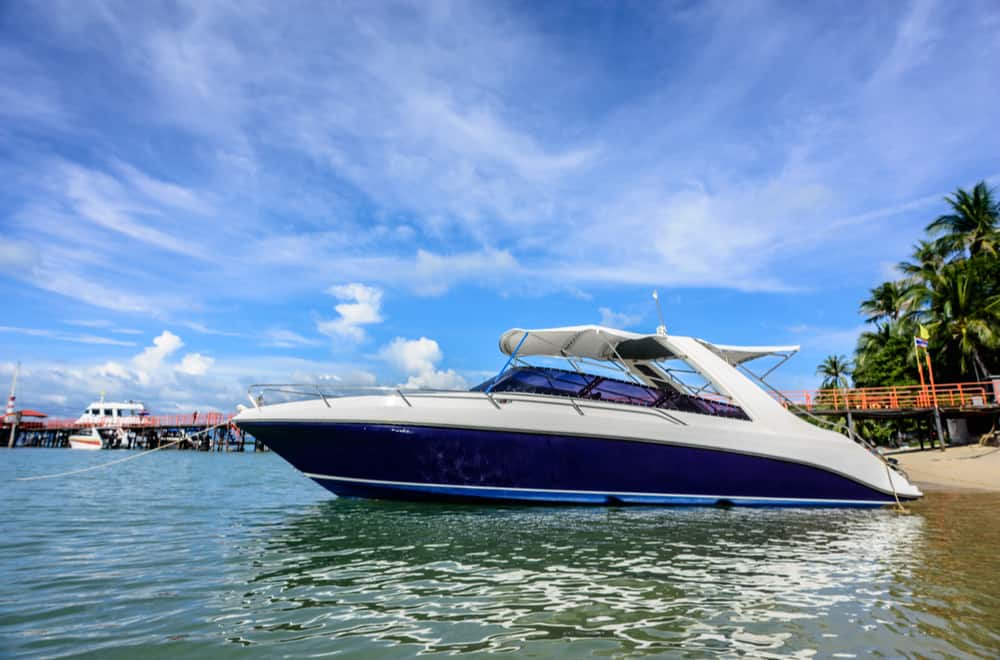
Aluminum fishing boats make great entry-level recreational vessels. They can be small enough for solo sailing or big enough for the boys (or girls) and several six-packs. But if you’re a more serious freshwater fisher – or if you like bass – you probably want a bass boat. This designated pleasure boat is made of fiberglass and can seat a couple of casual fishers.
Bass boats sit low on the waves so you can reach over and wrestle your catch. Their higher horsepower lets you access deeper waters. But for saltwater fishing, a bay or flat boat is best. It has more handling space, can withstand salt and sand abrasion, but its sides are still low for easy access to heavy fish. You can bend over the side, but you should avoid rough waters.
3. Runabout Boats / Walkabouts / Day Boats
Some consider this multi-monikered boat to be the most popular recreational boat type. This might be because the boat class has so many sub-categories, which we’ll dig into later. They are versatile enough for fishing, skiing, or partying, and hold 6-10 people plus boating gear.
These boats have a fiberglass design with space to walk, sit, or run around the boat. The boat’s perimeter is sometimes flanked by high guardrails that let you fish or comfortably enjoy the view. You can watch the water and feel the salty surf, and some have sleeping spots.
4. Bow Riders and Deck Boats
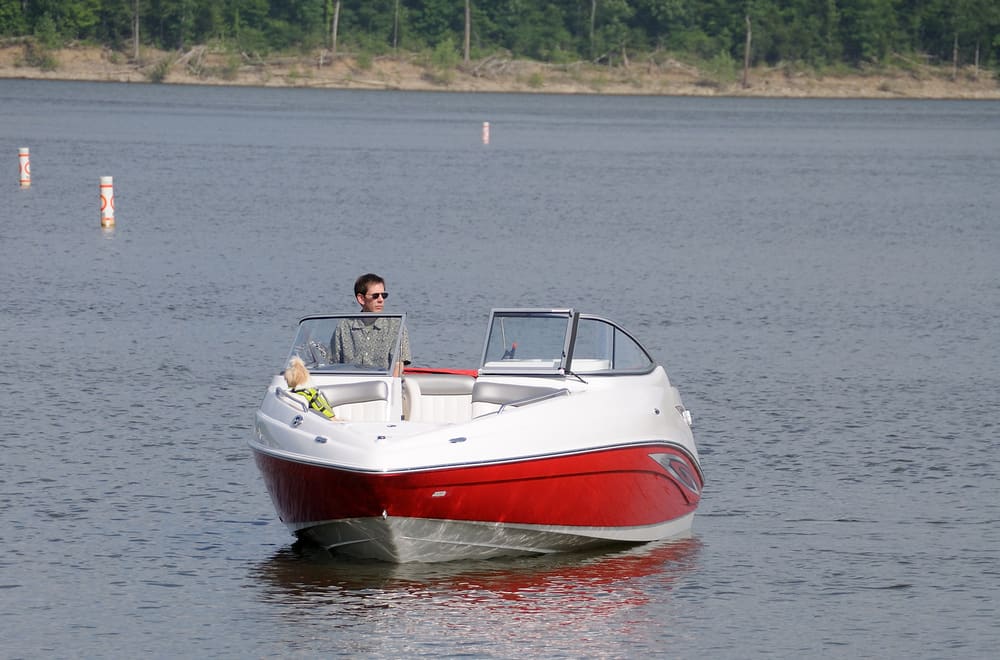
These two sub-classes of runabout boats have the same overall concept with one slight difference. They’re both built for a day out on the water and have padded seating around the edges of the boat. Bowriders have a narrow front with extra seats in front of the windshield.
Deck boats are similar, but the seating cushions run along the front (bow) as well as the back (stern) of the boat. These ends are equally wide and there’s no tapering at the bow, since the boats are boxy at both ends, meaning you can sit more people on deck boats than bowriders.
5. Watersport Tow Boats
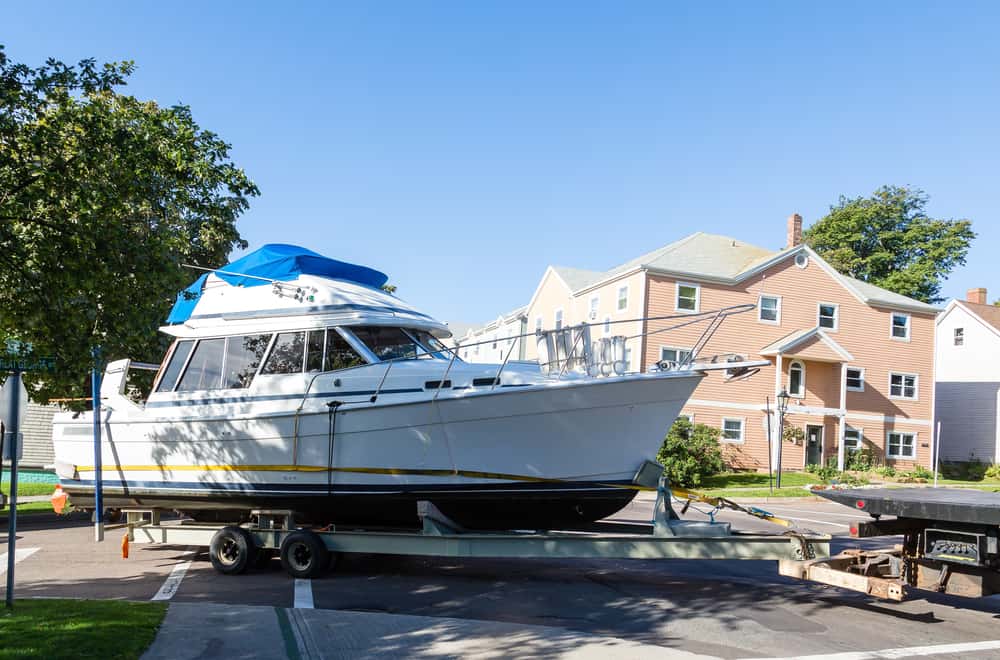
For those of you who love water sports, towboats are the ideal recreational boat type. They often have an extended platform so you can pull water skiers behind the boat. Towboats have several sub-classes as well, including ski boats, wake boats, and kite-surfing boats.
Wake boats move slower and create larger ‘wakes’ behind the boat for ‘flying tricks’. You can also opt for a fish-and-ski towboat. They’re luxurious enough to lounge in, with padded seating at the bow. They also have extra amenities like built-in livewells and fishfinders.
6. Centre Console Boats
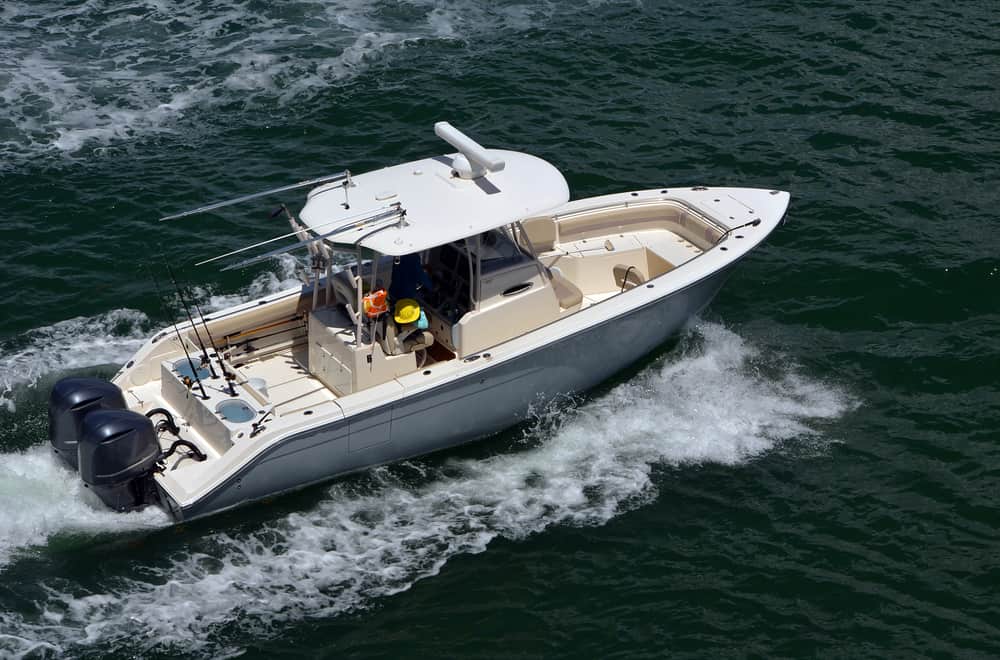
Bay boats, flat boats, and (freshwater) bass boats are all used for recreational fishing. They have an even deck and low sides for access and maneuverability. This design means you can skim shallow, calm waters and trail your hands under the surface to catch and haul the fish.
But if your pleasure fishing takes you further out, a center console boat is better. It has a higher freeboard with a covered steering section so you can sail through deeper, rougher waters. They’re often categorized as offshore boats, so they can take on +10-foot waves.
7. Pontoon Boats
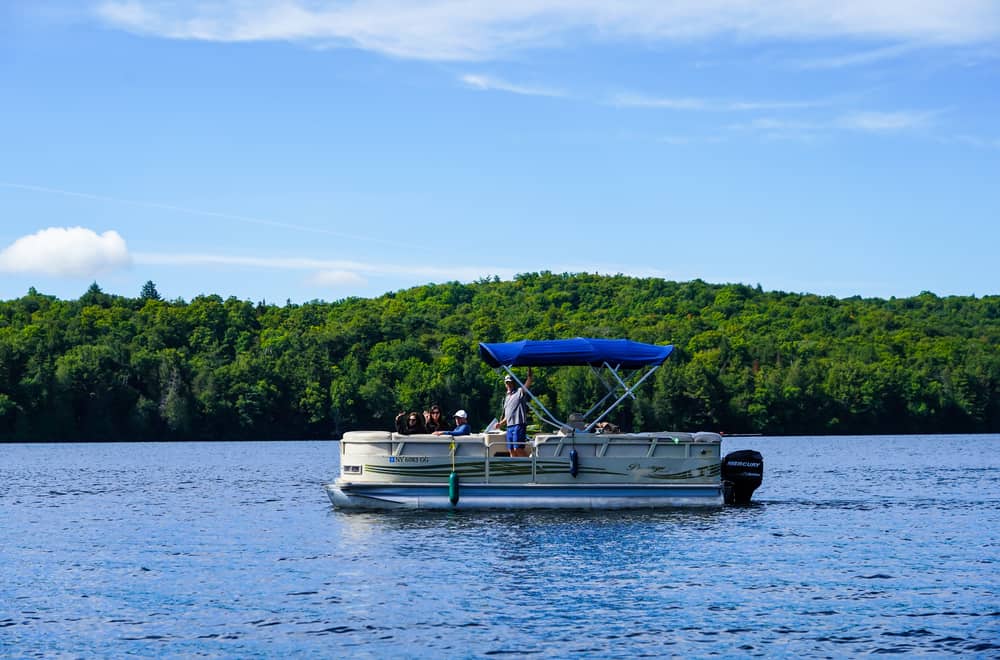
Typically, recreational boats have space for sitting and space for working or fishing. But pontoon boats focus on lounging areas and often have padded seats and open sides. These are designed to maximize the view while offering warmth and comfort for larger groups.
The seating section is often raised and centralized and the boat has tons of storage. It’s the perfect boat for a daytime cruise but is likely to get chilly in bad weather. The boat gets its name from the inflated cylindrical logs at the base. The tubes are called pontoons or floats.
8. Cuddy Cabin Boats
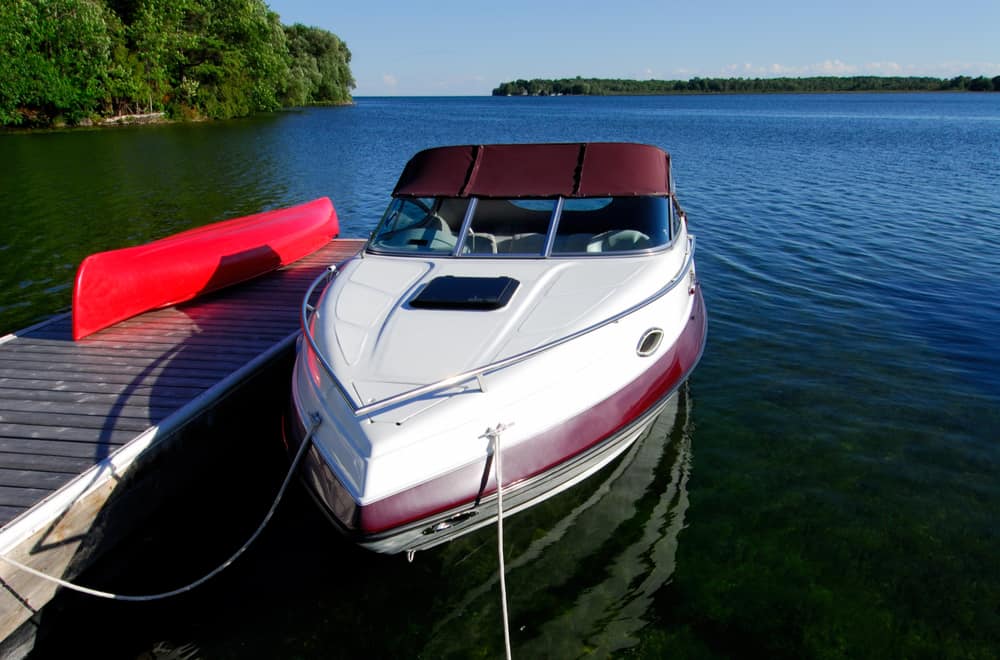
So far, the recreation boat types we’ve looked at are day boats. But if you intend to do some overnight camping on the ocean, you might consider a cuddy cabin. This is a type of day boat with some space under the deck where you can fit a small bed. But they’re mostly vintage.
This is because the cabin is too tiny for contemporary sailing – it barely fits one, and being a day boat, it’s not intended for long trips on rough waters. If you really want a cuddy cabin, you’d have to buy a pre-loved one, since they rarely offer new ones in boating showrooms.
9. High-Performance Boats
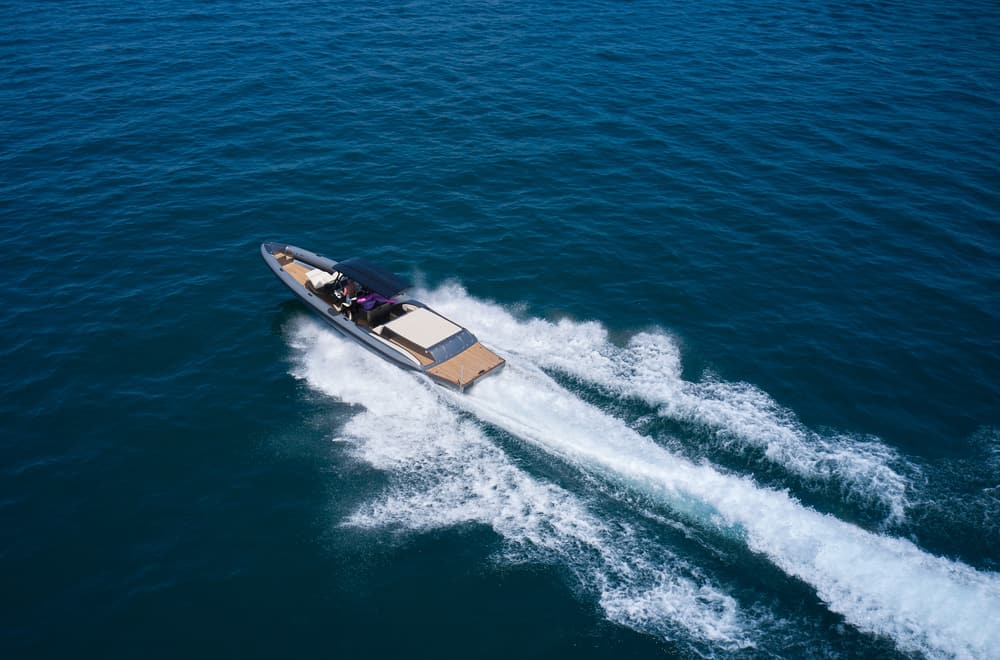
On your typical, some people use minivans or station wagons. Others drive SUVs or electric cars. But then you have the sportscar drivers, with their Mustangs, Ferraris, and Porsches. In the boating world, these daredevil drivers are likely to pilot high-performance pleasure boats. These streamlined boats are loud, fast, colorful, powerful, and are largely used for racing.
Just like a sports car, a high-performance boat is likely to have less seating space to leave room for all that turbo equipment. It’s a flashy boat and can effortlessly take on rough water. If you’re more into PWCs (aka jet skis), you may prefer a jet boat. It’s basically a high-performance boat that uses pressure pump jets instead of typical pleasure boat propellers.
10. Cabin Cruisers and Salon Boats
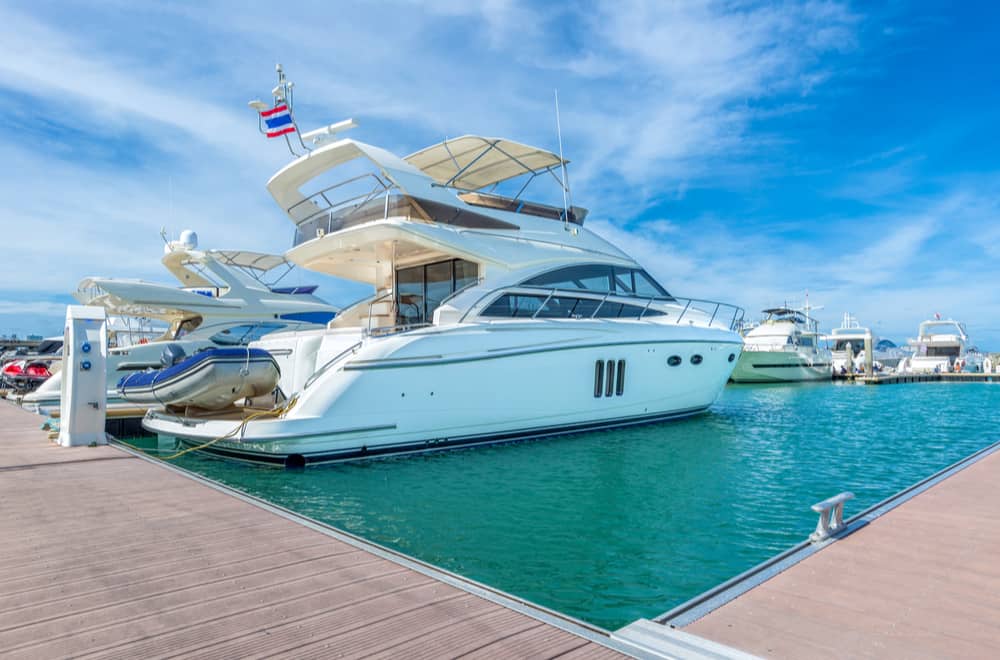
Before you get to the yachting budget level, you can start off with a cabin cruiser. This is a mid-sized recreational boat that has sleeping quarters, a shower, a toilet, and a kitchen. These sections can be at the back of the boat, though salon boats have beds below the deck.
Cabin cruisers work best for inland ‘water camping’ since they can’t always survive open ocean conditions. After a pleasure trip, you’ll need to stop at the official port or marina to drain your sewer. It’s illegal to dump it in rivers, lakes, or anywhere within 3 miles of land.
11. Flybridge Boats
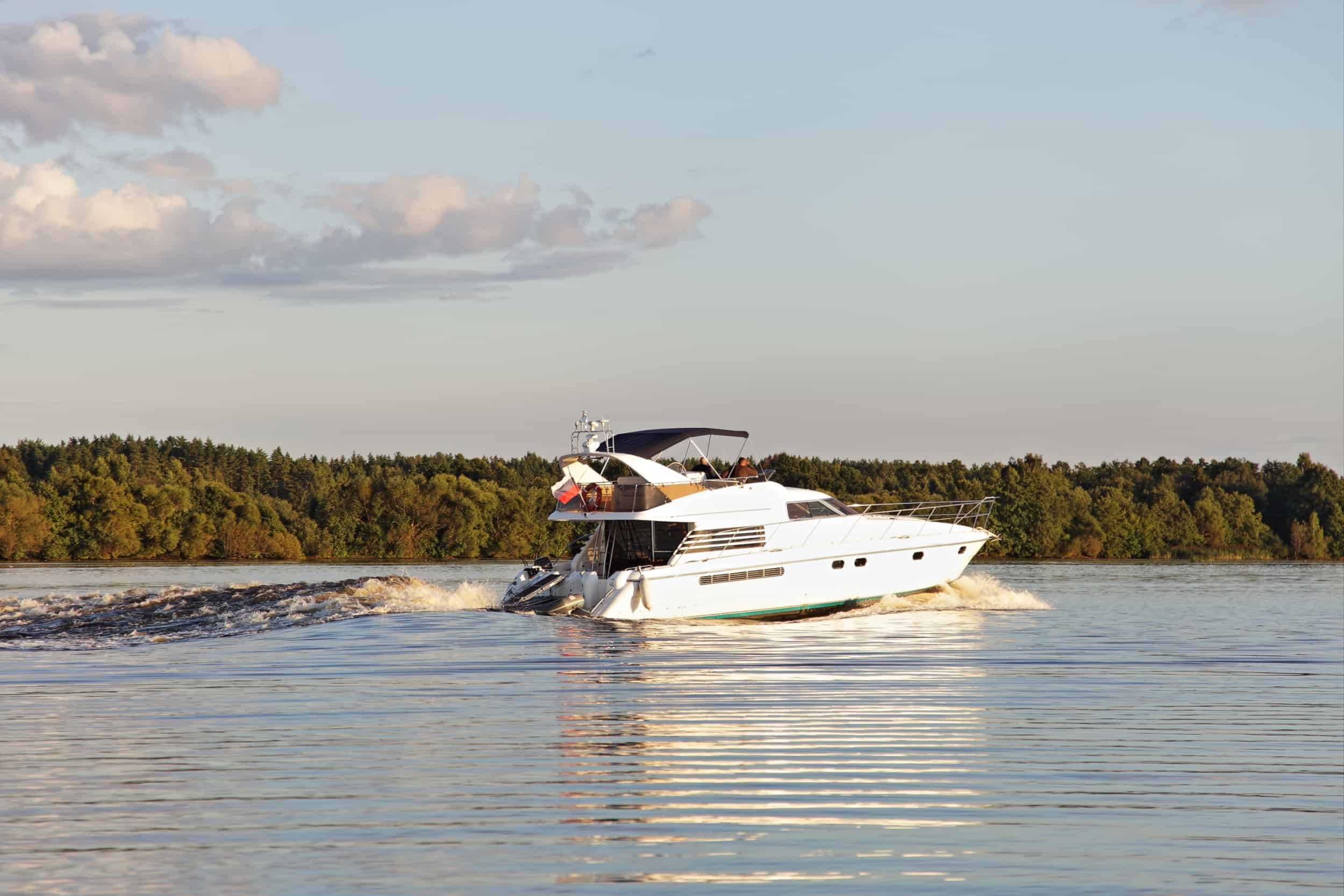
For those of us who love entertaining on the ocean, a flybridge boat is one of the best recreational boat types. The control station is raised above the cabin, so the boat seems to have three levels. This lets you show off your sailing skills and offers an amazing view.
The ‘flying’ bridge also lets you go into deeper, rougher waters while your guests can lounge on the deck below. These boats are good for diving and snorkeling because the pilot has greater visibility. Also, swimmers can easily spot that elevated bridge in the open ocean.
12. Trawlers and Yachts
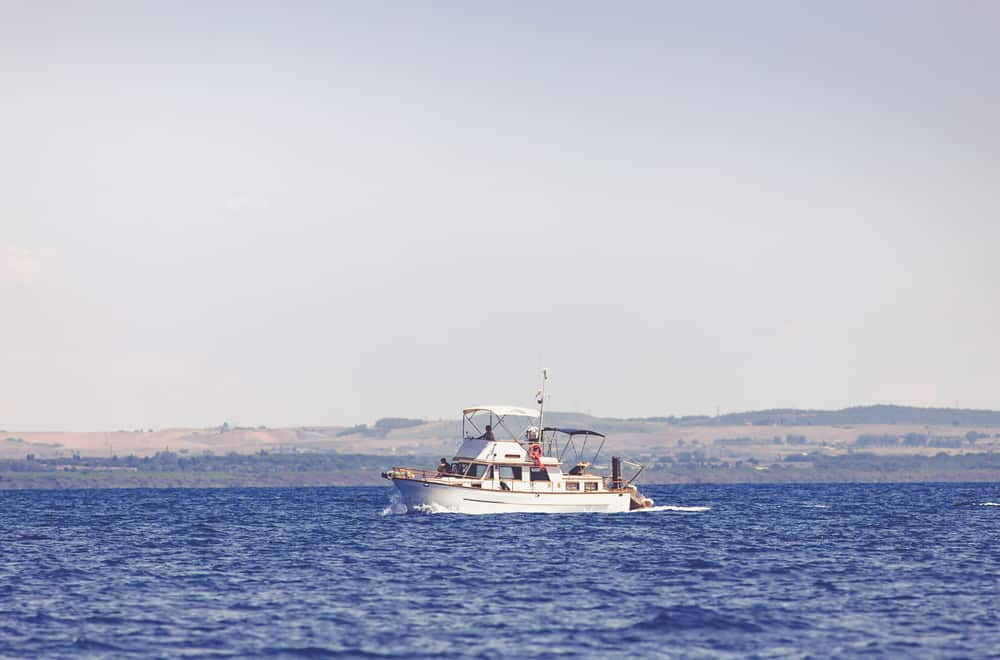
Now we’re surfing at the edge of the recreational boat category. Trawlers and yachts have the same size and control features, but while trawlers are mostly used for fishing, yachts are used for accommodation and/or entertaining. Both boats can be anchored deep inside the ocean. Unlike other recreational boat types, yachts and trawlers are designed for slower sailing.
Yachts are the more luxurious version while trawlers are generally Spartan in their accessories. Both boats often have a mid-level cabin with large windows and doors, but while a trawler will focus on livewells, fishfinders, and seafood storage coolers, a yacht leans more towards air conditioning, flat screens, hot tubs, and WiFi. Both can be used competitively.
13. Catamaran Boats
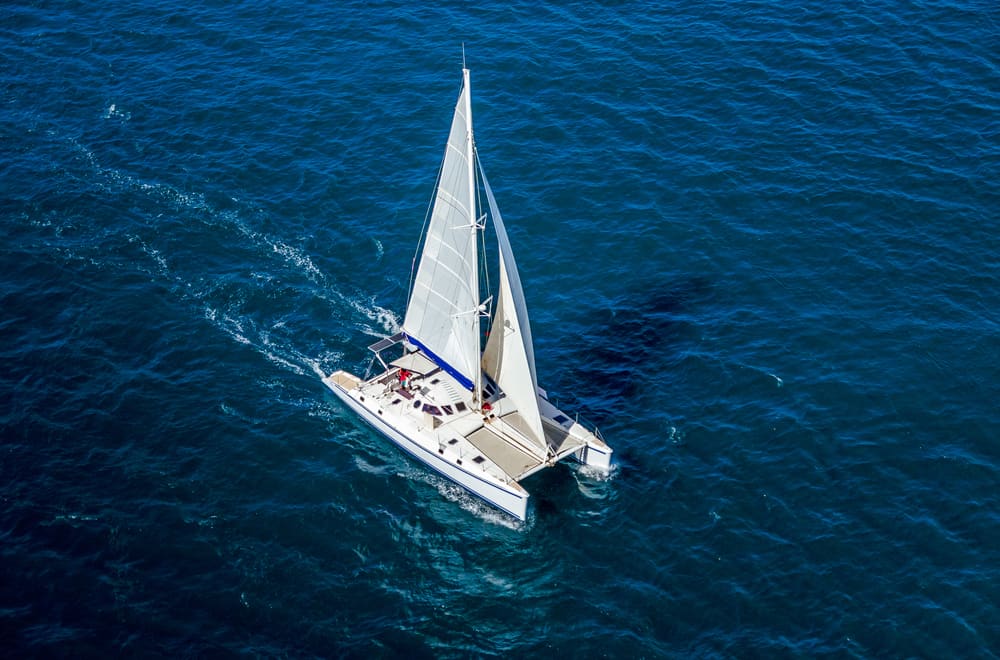
All the boats we’ve looked at so far are motorized. But what if you’re more into recreational sailing? Meaning you actively use masts, sails, and ropes to maneuver in the water. In that case, you may prefer a catamaran. It has two hulls and an engine, but you can switch that off. The extra hull offers stability in deeper, rougher waters, so this is a hands-on pleasure boat.
Most catamaran pilots will kill their motors once they’re in deep water, opting for a more analog approach to sea(wo)manship. This isn’t a beginners’ activity, so you’ll need to be a skilled seafarer before you can pilot catamarans unsupervised. And they can get quite fast! The two hulls can either be hollow pontoons or swaths (small water plane area twin hulls).
All Aboard!
If you love fishing and water sports, then you’d still count these as recreational boat types. The dividing line is whether you own the boat yourself and you don’t use it for business. It’s small enough to hold a handful of family and friends and might have cabins where you can sleep. Have you taken a trip on a recreational boat? Tell us all about it in the comments!
